Germany is home to 52 UNESCO World Heritage Sites, and over the years—I’ve travelled there on six occasions, two of which I lived there for 3 months at a time—I’ve made it a personal mission to visit as many as I can.
These places aren’t just historic landmarks; some are lively cities, half-timber towns, and romantic castles.
If you’re curious about which ones are truly worth adding to your itinerary, I’ve put together a list of 15 of the best UNESCO sites in Germany—places that stood out to me not only for their significance but for how they made me feel connected to the country in a deeper way.
This post may contain affiliate links, meaning I get a commission if you decide to purchase something through the links, at no additional cost to you. Read my Affiliate Disclosure.
15 German UNESCO Sites Worth Visiting
1. Aachen Cathedral
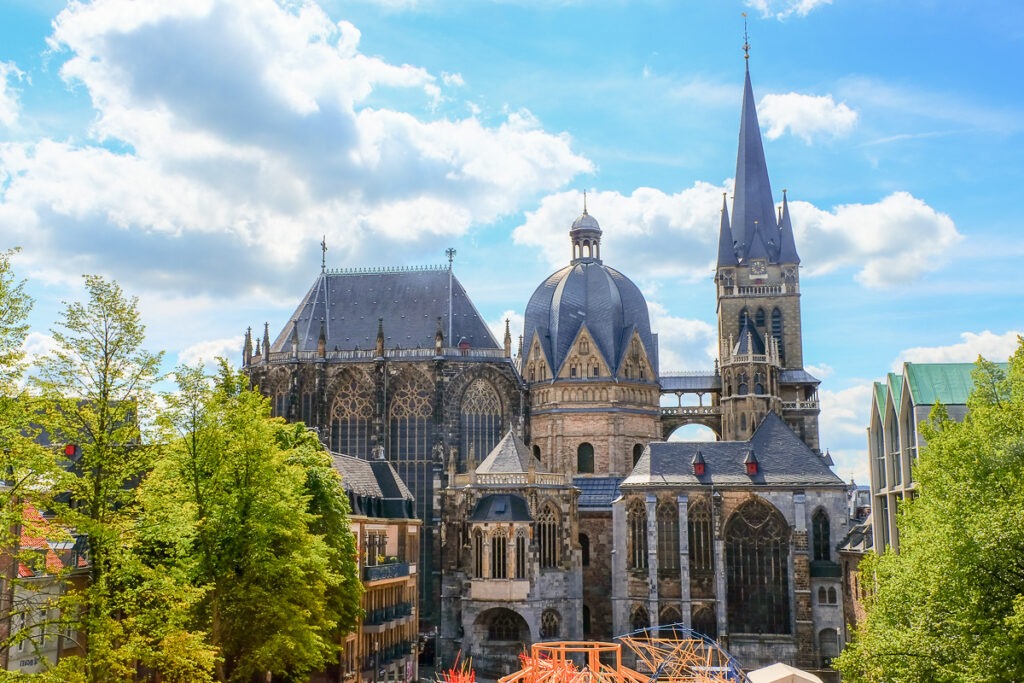
The highlight of visiting Aachen is without a doubt to admire the Aachen Cathedral built by Charlemagne in around 805.
It features a unique blend of architectural styles and an iconic octagonal dome. The best part is, you can explore it for free.
I recommend adding the charming nearby town of Monschau. Despite the fact it is not on the list of world heritage sites in Germany, it is one of the most picturesque medieval towns you’ll ever see!
2. Bamberg

Bamberg was one of the first towns I visited when I lived in Bavaria in southern Germany, and is a beautiful medieval town built in the 10th century by King Henry II. He made it the center of the Holy Roman Empire for a short time.
Bamberg is notable for three reasons its:
- unique medieval and ecclesiastical buildings,
- influential medieval and baroque town layout, and
- role as a major center of the Enlightenment in 18th-century Germany, home to renowned writers and composers like E.T.A. Hoffmann and Georg Wilhelm Friedrich.
3. Town Hall and Roland Statue in Bremen
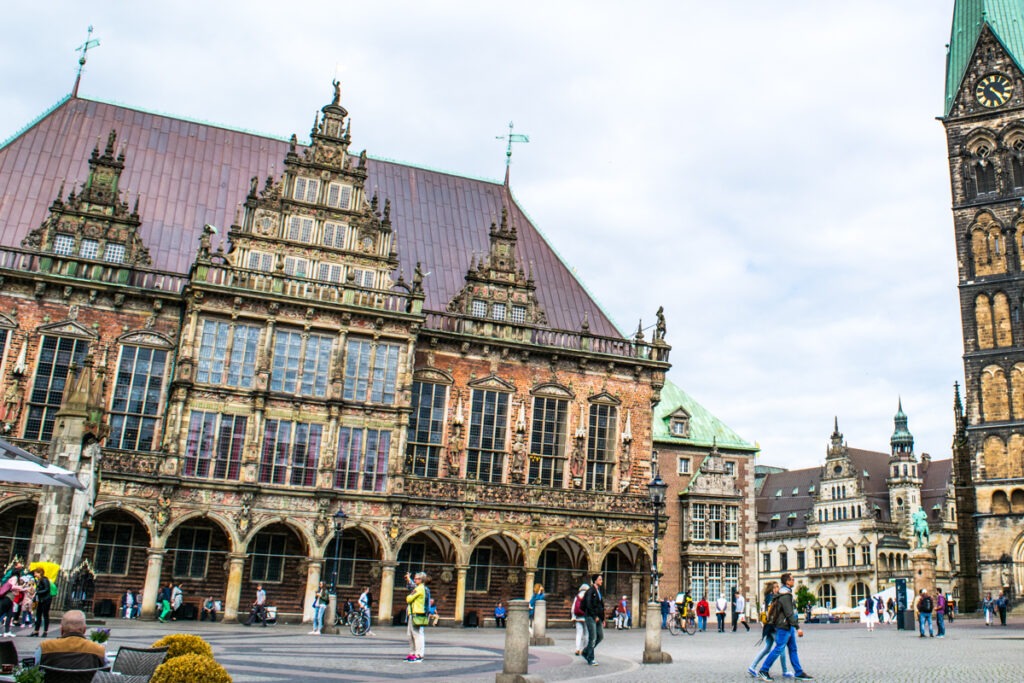
In Bremen, the town hall and the Roland statue are both UNESCO World Heritage Sites.
The town hall, comprising two buildings constructed in the 15th and 20th centuries, has served as the seat of the President of the Senate and Mayor for over 600 years. Its Brick Gothic and Weser Renaissance architecture is stunning. The Roland statue, over 600 years old, symbolizes freedom and trading rights, making it one of the oldest and most impressive examples globally.
I recommend adding Bremen to your itinerary when visiting Hamburg and Hannover.
4. Cologne Cathedral
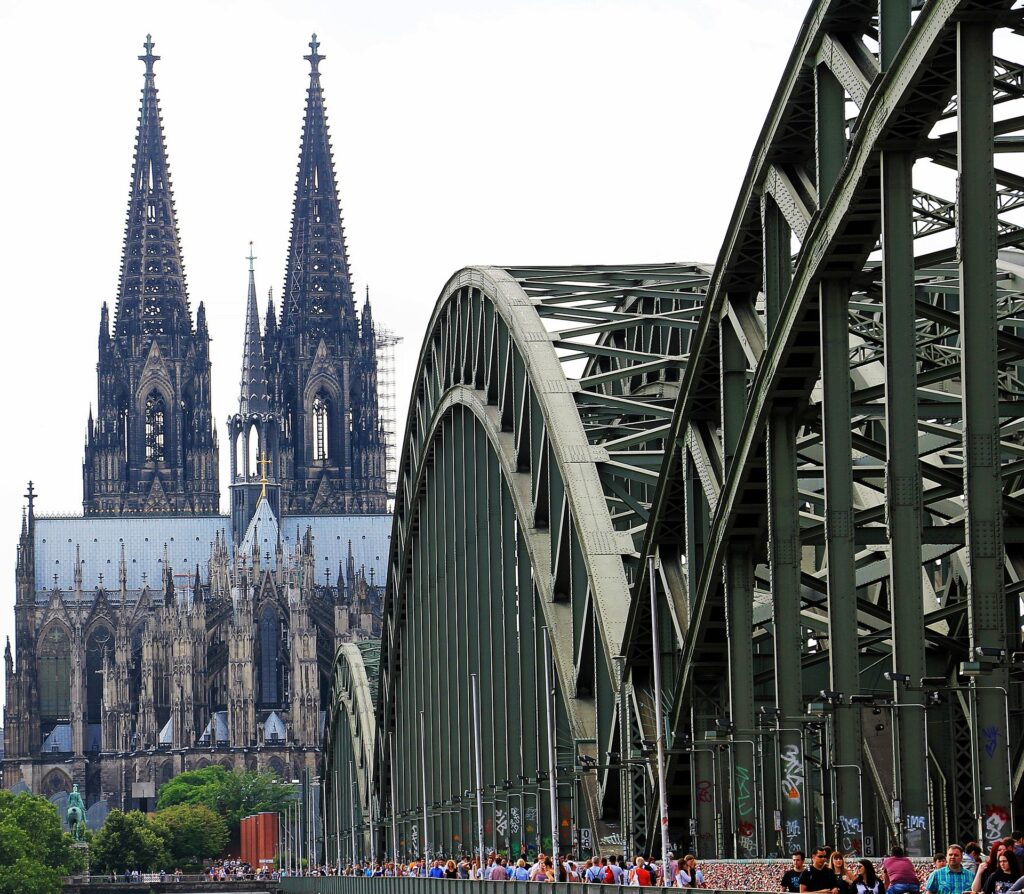
The Cologne Cathedral is world famous for its dual spires, which happen to be the second tallest in Europe and the best example of Gothic architecture.
As Germany’s most visited landmark, I’ve visited here twice, and a significant monument to German Catholicism, it draws many visitors who admire its expansive interior and climb the viewing platform for scenic views of Cologne and the Rhine.
Construction began in 1248 and was completed in 1880. Located next to the Hohenzollern Bridge, the cathedral is easily accessible from Cologne Station via high-speed rail.
5. Historic Town of Goslar
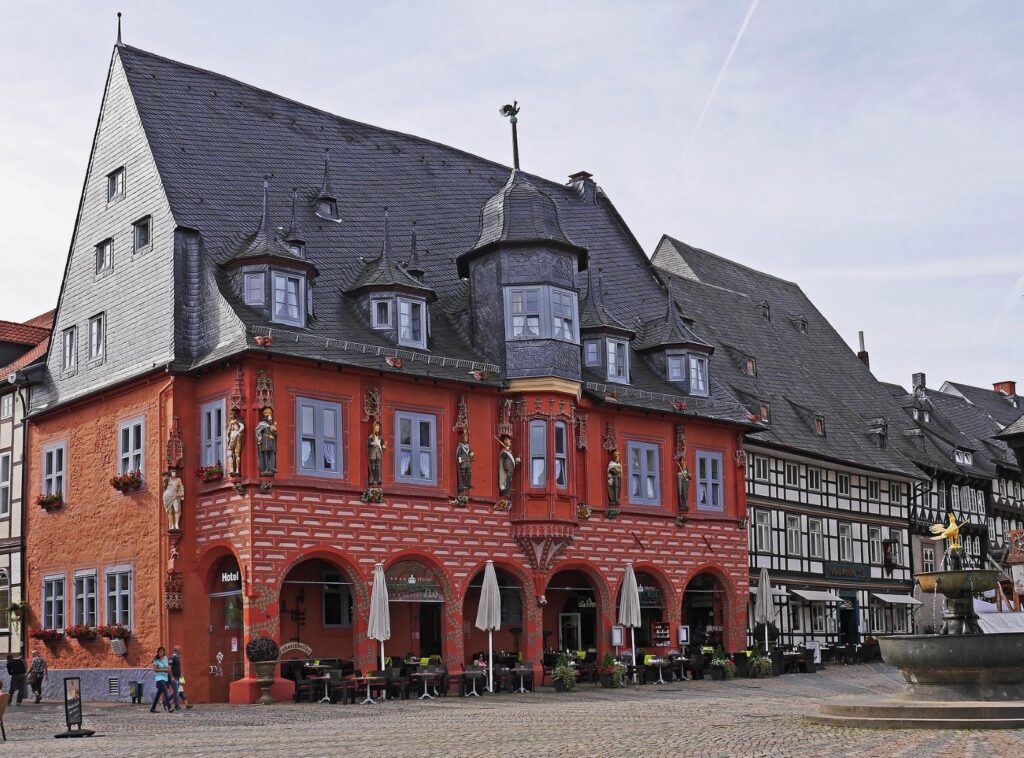
Goslar, a beautiful town in northern Germany’s Harz Mountains, is a local gem that is not known by most tourists.
Resembling a fairytale village with its narrow streets, half-timbered houses, and medieval charm. Notable sites include the Imperial Palace, once a summer residence for German emperors, and the Rammelsberg mine, where visitors can tour the historic underground tunnels.
I recommend adding the nearby town of Quedlinburg to your UNESCO road trip itinerary which will be covered later in this article. I visited both of these beautiful towns while living in Berlin.
6. Speicherstadt and Kontorhaus District in Hamburg

Speicherstadt and Kontorhaus in Hamburg, adjacent districts, showcase the city’s historic importance as a major port.
Speicherstadt, the world’s largest warehouse district, exudes old-world charm with buildings dating from 1880 to 1920 along the Elbe River. Kontorhaus, neighbouring Speicherstadt, features larger official buildings from the 1920s to the 1940s.
Other interesting structures include the Chilehaus, completed in 1924, and Montanhof.
Hamburg is one of my favourite German cities. It’s got such a cool vibe and is a perfect place for a weekend- especially if you love architecture and good food.
7. Old Town of Lübeck

The Old Town of Lübeck, a well-preserved heritage city in Germany, sits on the Trave River near the Baltic Sea.
Once a key maritime center and member of the Hanseatic League, Lübeck is famous for its Hanseatic architecture. Notable sites include the Hospital of the Holy Spirit, salt storehouses, and the Holsten Gate. Despite 20% destruction during WWII, UNESCO recognizes the city’s authentic reconstructions while omitting entirely rebuilt areas.
8. Museum Island in Berlin

Museum Island in Berlin is a 21-acre cultural hub in the middle of the Spree River. It is home to five museums:
- Altes Museum
- Neues Museum
- Alte Nationalgalerie
- Bode Museum
- Pergamon Museum
The island, also home to the Berlin Cathedral, showcases unique architecture and amazing art collections. Built between 1824 and 1930, the museums reflect over a century of architectural evolution.
A top Berlin attraction, visitors can spend days exploring the museums and admiring the architecture, with the Berlin Cathedral dome offering panoramic city views.
If you are planning a trip to Berlin, be sure to check out some of my itinerary articles to help you plan your time in this capital city:
- How to spend a day in Berlin
- What to see and do in Berlin in 2 days
- Top attractions to add to your 3 days in Berlin
9. Palaces of Potsdam

The palaces of Potsdam, just outside Berlin, are an easy day trip destination featuring 2,064 hectares of parks, gardens, promenades, and palaces like Sanssouci, Neues Palais, Babelsberg Palace, and Charlottenhof Villa.
The area showcases the wealth and power of Prussian kings through Baroque and Rococo architecture. The palaces boast elaborate interiors with marble, gold, silver, and intricate woodwork, as well as impressive art collections. The grounds include diverse gardens, vineyards, an oriental tea house, and orangeries all reasons to visit Potsdam.
10. Quedlinburg

In Quedlinburg, the Old Town and the Collegiate Church of St. Servatius stand as UNESCO World Heritage Sites. The Old Town features over 1,300 beautiful medieval half-timbered houses, while the Collegiate Church, dating back to the 10th century, showcases Romanesque architecture. Together, they offer a winning combination to make sure you visit this town.
I recommend you add Goslar with a visit to this town, and did you know this can even be done as a day trip from Berlin?
11. Old Town of Regensburg

Regensburg, one of Bavaria’s best destinations, is a picturesque river town with a well-preserved medieval center. When I lived in Bavaria, I lived in a small town called Kulmbach which is very close to Regensburg and would visit here on the weekends.
The Old Town features Roman, Romanesque, and Gothic architecture. Key sites include the 12th-century Old Stone Bridge, St. Peter’s Cathedral, the old town hall, and the historic corn market. The city is also famous for its medieval patrician houses and numerous churches.
Regensburg’s Old Stone Bridge, a symbol of the city, once served as its only passage over the Danube.
Most visit this town while spending time in Munich, which is only about an hour away.
12. Rhine Valley
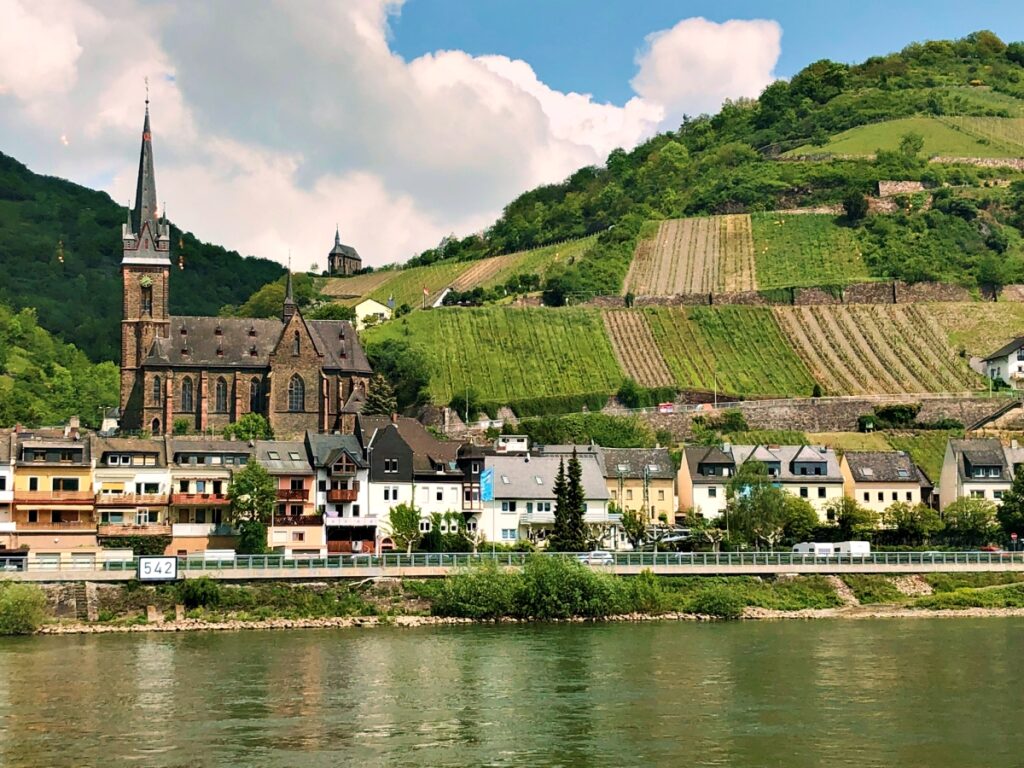
The Upper Middle Rhine Valley holds historical significance as a vital transportation route between northern and southern Europe. Its cultural importance, showcased through castles, villages, and agriculture, reflects the evolving traditional life along the river valley.
While a day-long river cruise offers a glimpse of the valley’s beauty, deeper exploration is recommended to fully appreciate its cultural and historic richness. Visitors can explore castles like Reichenstein, stay overnight in select ones, and enjoy wine tasting at vineyards. Strolling through riverside villages like Boppard and Bacharach adds to the charm of this picturesque region.
13. Wismar

A coastal gem in northern Germany, Wismar, along with the city of Stralsund earned its designation for its well-preserved medieval architecture and maritime heritage.
This Hanseatic city has a picturesque old town that I fell in love with- especially its brick Gothic buildings, including the Market Square and St. Mary’s Church. Don’t miss exploring the historic harbour.
Combine your UNESCO road trip to include Stralsund, which is at the northeast tip of Germany.
14. Wittenburg

Wittenberg earned its UNESCO status for its pivotal role in the Protestant Reformation. Home to Martin Luther, this historic town witnessed the birth of the Reformation movement, marked by Luther’s famous 95 Theses at the Castle Church in 1517.
Just a short train ride from Berlin, visit here for the day and you can visit Luther’s home, the Castle Church, and other significant sites that played a crucial role in shaping the course of European history.
15. Würzburg Residence

Despite Würzburg’s extensive wartime destruction, the Würzburg Residence survived and gained UNESCO World Heritage status in 1981.
Constructed from 1720 onwards by architect Balthasar Neumann for Prince Bishop Phillip Franz von Schönborn, it reflects a magnificent blend of European palace styles, including influences from Vienna, Paris, Genoa, and Venice.
The palace features 40 rooms, including the White Hall and Imperial Hall, adorned with frescoes by Giovanni Battista Tiepolo. Free entry to the Court Chapel and gardens is available, while guided tours offer an immersive experience, and a highlight of Würzburg.
Final Thoughts
How many UNESCO sites in Germany have you missed? I hope this list has inspired your next trip. For more inspiration, visit my Germany travel page to see all the articles.


